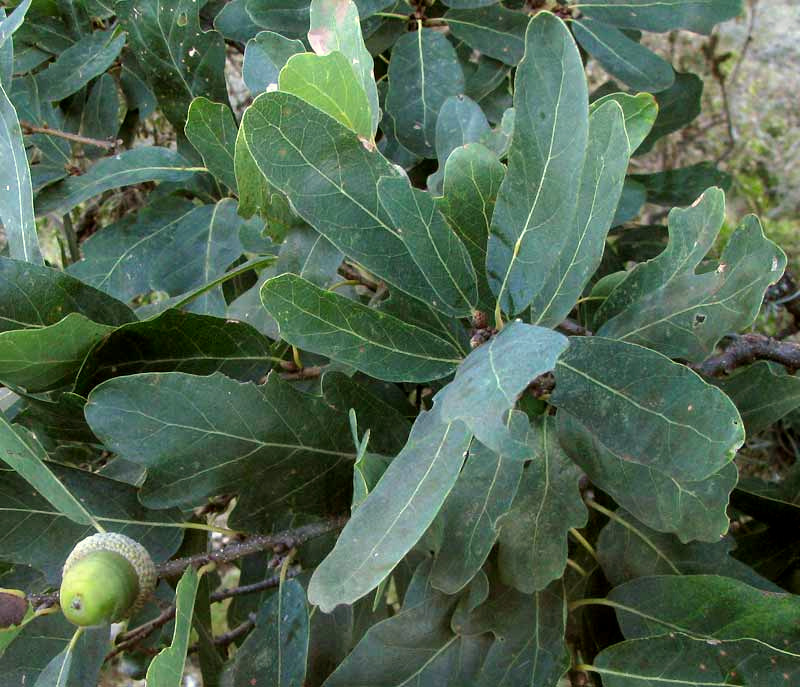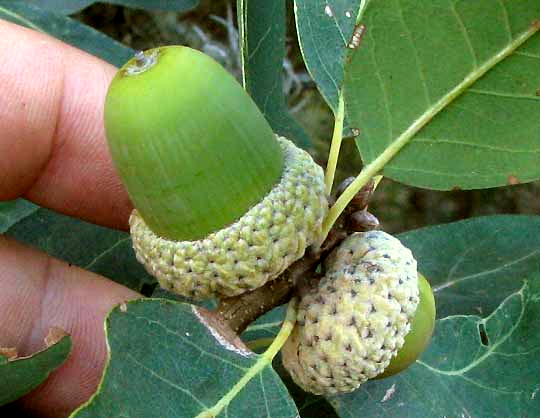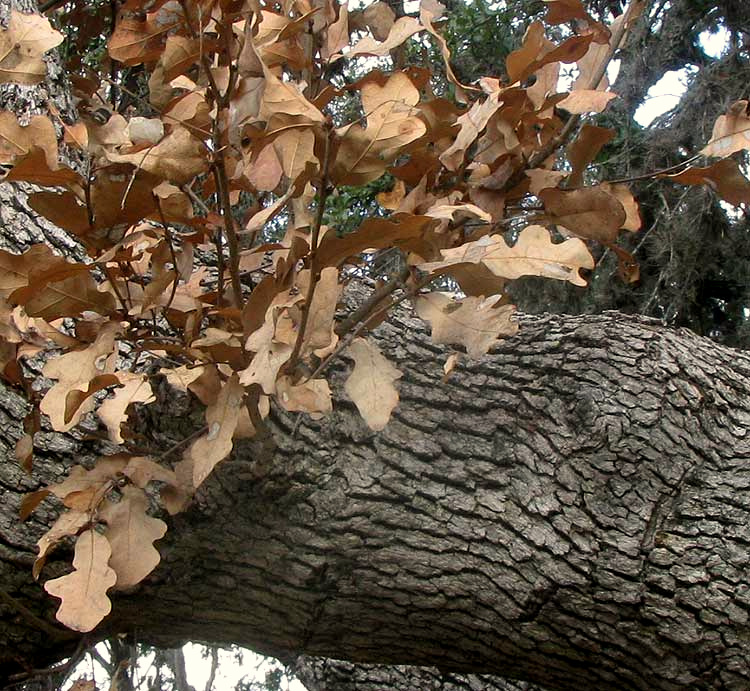Excerpts from Jim Conrad's
Naturalist Newsletter

from the October 6, 2013 Newsletter issued from the Frio Canyon Nature Education Center in the valley of the Dry Frio River in northern Uvalde County, southwestern Texas, on the southern border of the Edwards Plateau; elevation ~1750m (~5750 ft); N29.62°, W99.86°; USA
LACEY OAKS WITH ACORNS
In the above picture you can see why some local ranchers call Lacey Oaks "Blue Oaks." Below you can see that Lacey Oak acorns have shallow cups enclosing only 1/3 or less of the acorn, and the cups' scales are whitish with dense, short hairs:

from the February 3, 2013 Newsletter issued from the valley of the Dry Frio River in northern Uvalde County, southwestern Texas, on the southern border of the Edwards Plateau; elevation ~1750m (~5750 ft); N29.62°, W99.86°; USA
Lacey Oak leaves in February
In any other season than now, it's doubtful that I'd have noticed that a stone's throw up a little dry arroyo the road dipped into there was a kind of tree I hadn't yet identified in this area. Any other time of year its dark green leaves would have blended with dark green foliage of all other tree species. However, nowadays all our trees are either dark green -- like the Ashe Junipers and Texas Live Oaks constituting maybe 95% of our forest trees -- or else leafless, or maybe some of the Texas Red Oaks still bear a few dark, rusty red leaves. This arroyo tree -- clearly some kind of oak -- wasn't like any of that, however. Its leathery leaves were brown like old parchment, as you can see below, on some sprouts arising from the tree's horizontal, fifteen-inch-thick (40cm) trunk, which was leaning out over the arroyo.

At first I thought the tree was a Post Oak -- we're at the most southwestern point of that species' distribution -- but the leaves weren't really shaped right. Nor did the leaves and acorns match any of the trees in my tree field guide. Therefore, remembering that the online "Flora of North America" has its oak section finished, I went to the Flora's treatment of all 90 North American oaks and "keyed out" our arroyo tree with its parchment leaves.
No bristles on leaf margins... sinuses between leaf lobes extending less than one-third the distance from the leaf's margin to the midrib... leaf veins not conspicuously parallel but rather somewhat curved and branching... no hairs on the leaves' undersurfaces...
The key lead me directly to the Lacey Oak, QUERCUS LACEYI, which I'd never heard of. Lacey Oaks are a little-known oak species described as occupying canyons and streamsides in limestone hills (like here), and occurring only in a couple of states of arid northeastern Mexico, some isolated spots in two counties in the Big Bend area of extreme western Texas, and the Edwards Plateau of Texas, which is exactly where we are.
So, this is a fine discovery! It's always a pleasure to meet any tree that's new to me, and it's especially good to find one that occurs in such a small area and is known by so few people.